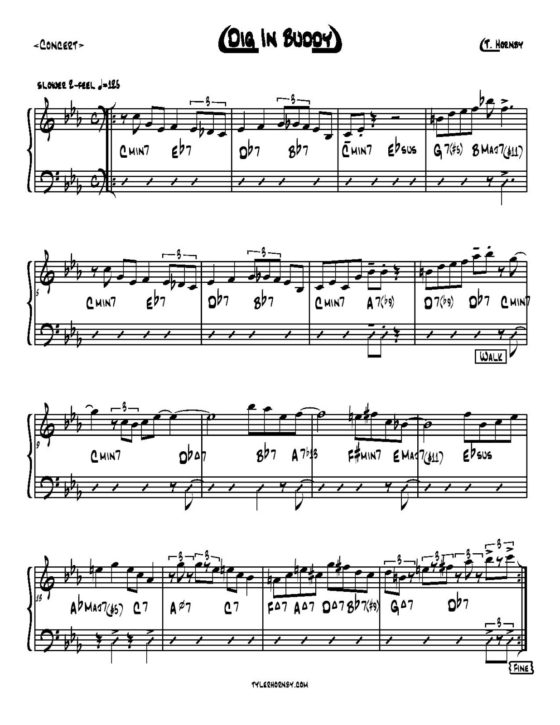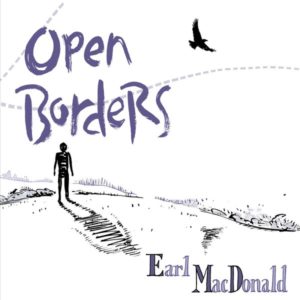Tyler Hornby, a drummer based in Calgary, Alberta, Canada, hired me to write a big band arrangement of his composition, “Dig In Buddy.” When it was completed, I decided to adapt it to perform and record with my own 10-piece band. Here is the final version, as it was recorded on my new album “Open Borders,” which is available now through the Bandcamp website.
As I listen back to this arrangement, I can hear and am reminded of ideas I adopted from Bob Brookmeyer, albeit indirectly (from interviews, conversations with his students, etc.), as I never had the opportunity to study with him. I deliberately refrained from “turning over the reigns” to the soloist(s) immediately after the initial melody statement. As Bob preached, I introduced an improvised solo only when it was the sole plausible musical event that could happen next, and all other ideas have been exhausted. Once solos were introduced, I also did my best to retain some directional control, by guiding the soloists with “solo enhancements” (a much better term than backgrounds).
The trading of musical phrases by the trombone and tenor sax was inspired by knowing that two of my close friends, Jim and Craig Brenan reside in the same Canadian province as Tyler, and they would be likely choices to play in his big band. I reveled in the idea of pitting these identical twins against one another in a battle of sorts.
The other guiding notion was keeping the drums actively interacting with the band throughout the piece, to serve as a reminder that the drummer was the composer. Occasionally, one might hear some musical references to Art Blakey’s Jazz Messengers, a band that had a considerable impact upon me as a young musician.
For reference, here’s the original lead sheet I was given to arrange, as well as a video of Tyler Horby’s band playing the tune, before I arranged it:
Finally, here’s a video I made when I was arranging the piece, back in 2012, and blogging about the process:
In the early stages of the arranging process, I wanted to reinforce the Art Blakey-esque quality of the piece. The question soon became “How?” I experimented with 3-horn “crunch” voicings (for a lack of a better label), that I have seen in many of the Jazz Messenger charts I have transcribed over the years. These voicings typically have a major third and a minor second below the melody. Often they are used over a pedal point. I applied these to Tyler’s progression and came up with a little vamp that could be used within the intro, to underpin the melody, and as a background figure behind soloists.
Hopefully this post provided some insight into my arranging process. If you’re interested in hearing other pieces from the “Open Borders” album, it can be ordered (either digitally or as a CD) through the following link: https://earlmacdonald.bandcamp.com/album/open-borders


